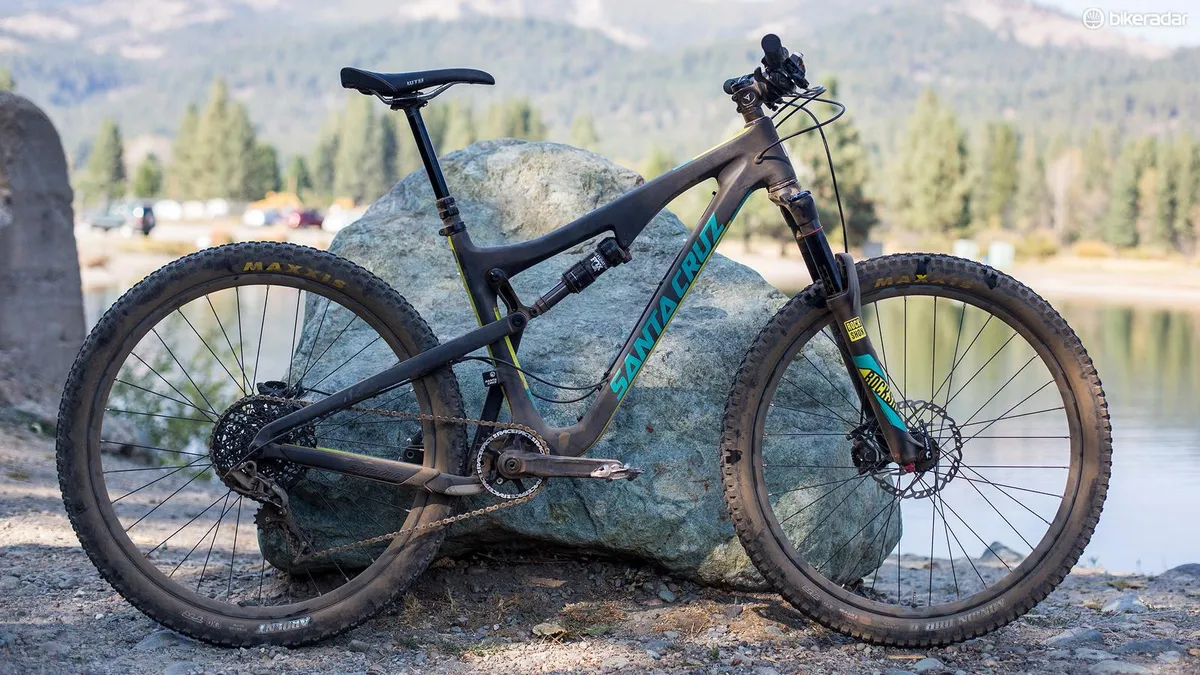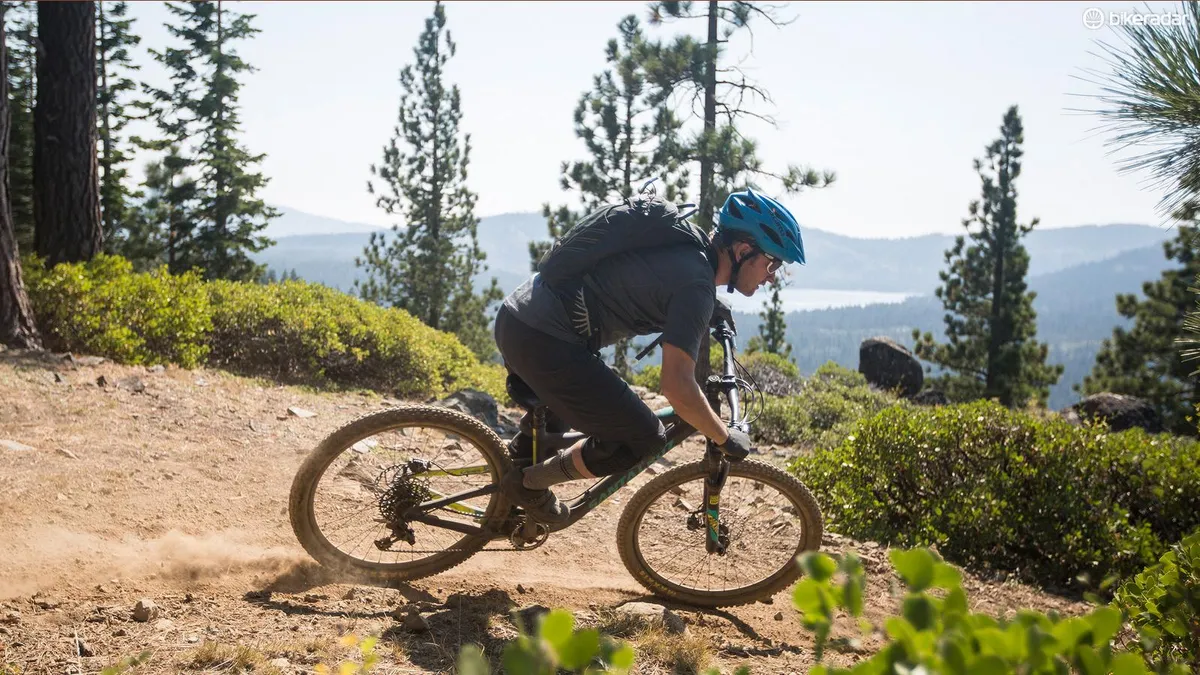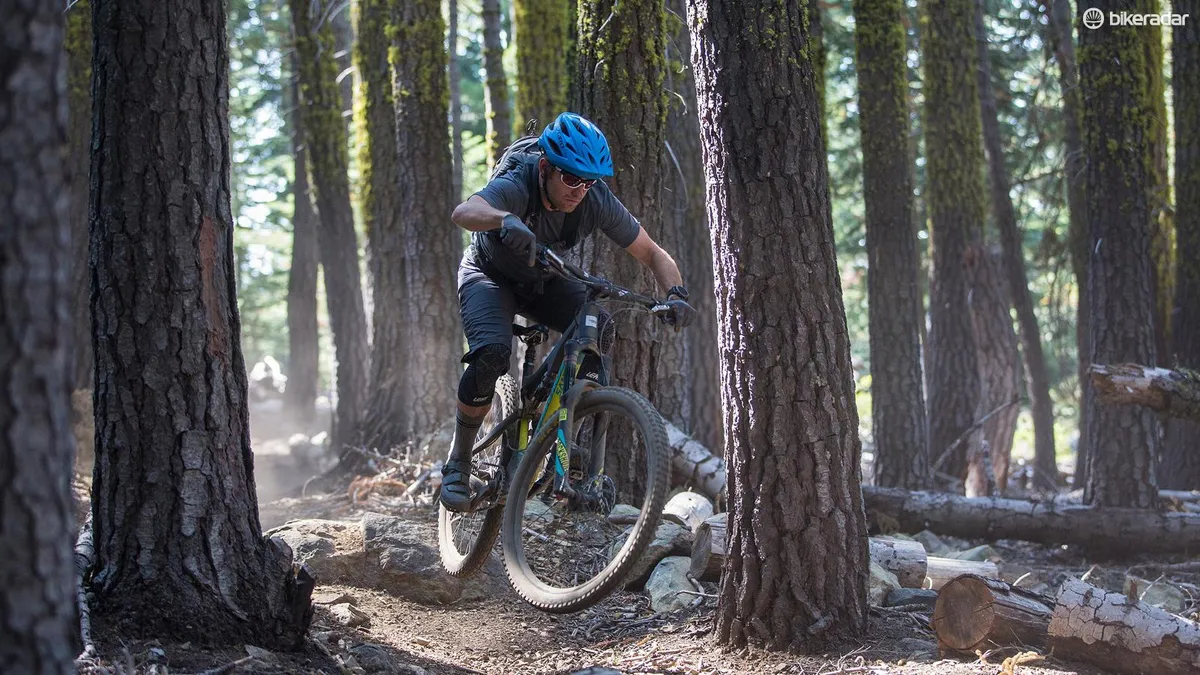It was no small feat for Santa Cruz to improve on a model as well-loved as the 5010. This short-travel trail bike captured the hearts and minds of many mountain bikers with a low-slung chassis adept at carving corners and just enough suspension to get the rider in and (usually) out of trouble. So what did Santa Cruz do improve upon it? Built in a bit more stability, added a tad more travel, and cleaned up the aesthetics with internal routing and a redesigned VPP linkage.
- Highs: Improved geometry, terrific trail manners
- Lows: No alloy version until next spring (but the budget carbon bike tested here is a great value)
- Buy if: You're looking for a top-notch trail bike that won't break the bank
5010 Highlights
- 130mm of front and rear travel
- Slacker, 67 degree head tube angle
- New VPP linkage design
- Internal cable routing
- ISCG-05 tabs
- 73mm threaded bottom bracket
- 148x12mm rear axle spacing
- Longer top tubes (20-25mm) than previous version
Design details: A slacker, sleeker chassis
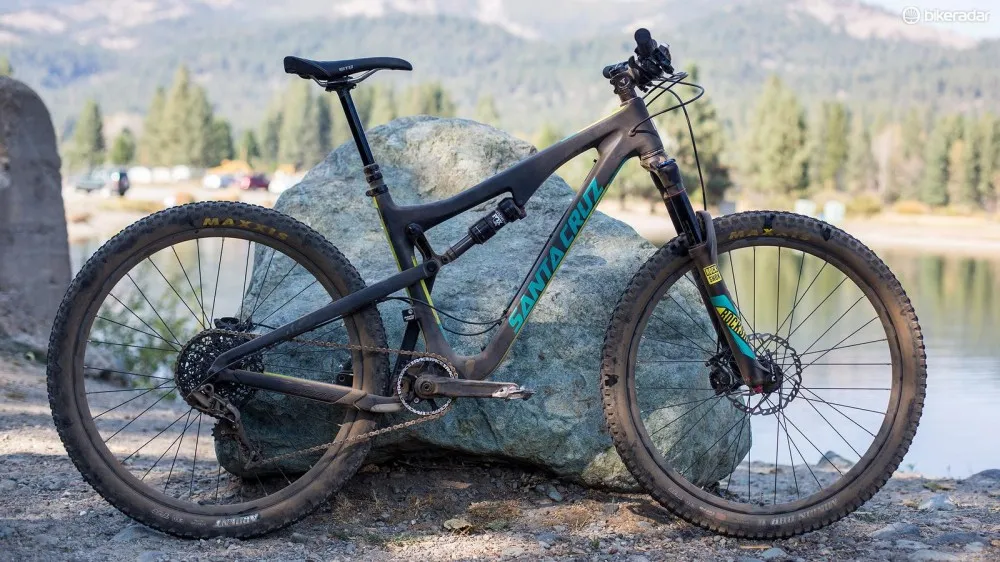
While there was a lot to love about the original 5010, one frequent criticism of it — and other Santa Cruz mountain bikes — was that the top tubes were too short. Today’s stubby stems require a bit more reach than what had been offered in the past.
The company has remedied this on the 5010 as well as the Bronson, lengthening the top tubes by 20-25mm across all four sizes. Effectively sizing up each frame size, which is something many first-gen 5010 riders resorted to in order to achieve their preferred fits.
The new 5010’s head tube angle slackens from 68 to 67 degrees, while the seat tube angle steepens from 73 to 73.8 degrees to place the rider in a better position over the cranks for climbing.
The chainstay length shrinks from an already compact 434.8mm / 17.08in to a very whippy 425mm/16.7in. This was made possible by incorporating the 148x12mm rear thru-axle standard that is quickly becoming the norm on all new model year 2016 mountain bikes.
One critical aspect of the 5010’s geometry that didn’t change was the bottom bracket height. It’s still pegged at 334mm / 13.1in to give the bike the low-slung, slalom-bike feel inspired by the beloved Blur TRC.
Santa Cruz also saw fit to design the 5010 around the revised VPP layout introduced with the Nomad last spring. The upper link now rests at the junction of the top and seat tube. The lower linkage, which exposed its dangly bits to rocks and other trail obstacles, is now tucked neatly above and behind the bottom bracket. Frankly, VPP has never looked so clean.
Streamlining the frame continues with a switch to internal cable routing. Yes, internal cable routing can be a nightmare, but riders can rest easy knowing that full carbon tubes molded into the frame will make guiding derailleur and dropper seatpost lines through the 5010 quick and easy process. Since the frame is designed around 1x as well as 2x drivetrains, the cable port on the non-drive side is large enough to fit the front and rear derailleur lines.
As for the dropper seatpost, Santa Cruz has moved from the 30.9mm seatpost diameter to the larger 31.6mm standard. This was done to allow riders to run the 150mm RockShox Reverb seatpost. Complete bikes will come with 150mm Reverbs on sizes medium through XL; size small 5010s use the 125mm version.
Ride and handling: More of a good thing
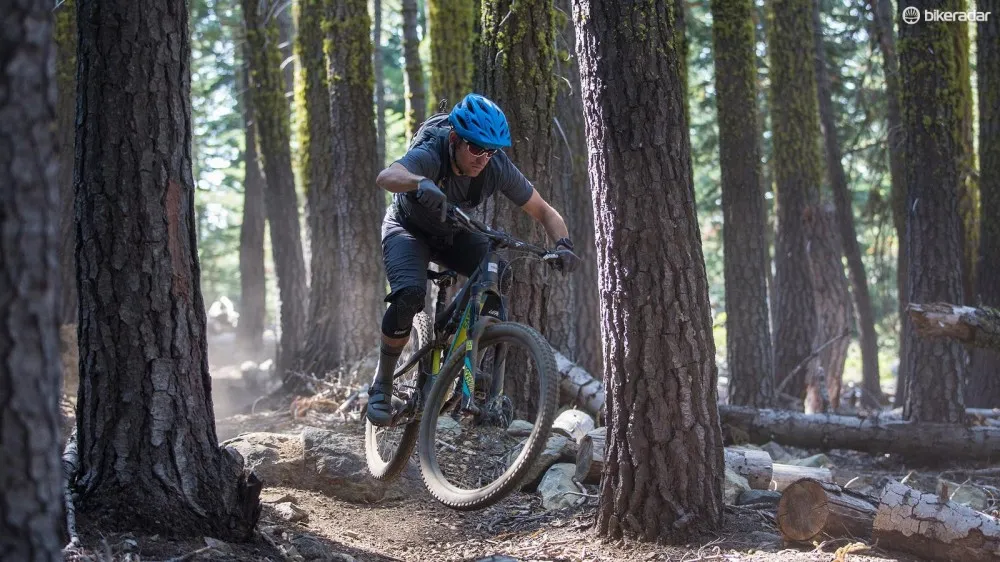
I tested the more affordable 5010 C with the well-rounded S build consisting of a RockShox Pike RC fork, Shimano SLX brakes and a SRAM GX1 drivetrain.
The top shelf ‘CC’ frames are lighter than budget-minded ‘C’ versions by approximately 250-280g thanks to the extensive use of more expensive high-modulus carbon. The ‘C’ frames are just as stiff, but require a bit more carbon material to get there. The choice is yours: keep the weight off your bike or keep more money in your pocket.
The original 5010 impressed many BikeRadar editors with its raucous trail manners. The simplest explanation is often the right one and in this case, the 5010 is just a damn fun bike to ride. It pops effortlessly off the trail and swoops through corners with ease.
A short-travel trail bike should climb as well as it descends. The 5010 scoots forward without unwanted suspension movement. There’s little need to run additional low-speed compression damping — just leave the shock in open and enjoy.
If there was a situation where the original 5010 came up short, it was on wide-open, mach chicken descents where the relatively compact wheelbase required the rider to be hyper focused holding their line. By stretching the top tube across the size range and slackening the head angle by one degree Santa Cruz has bred a bit of stability into the 5010 without giving up anything in terms of playfulness.
The addition of the EVOL-equipped Fox shock along with the 5mm increase in rear travel seems to result in a bit more give as the 5010 eases into its travel. This is nice when trying to keep the rear end planted on loose terrain, but there’s still ample mid-stroke support to push against when the time comes to boost off rocks and power out of berms.
Verdict
All the changes Santa Cruz made to the 5010 were for the better. The 5010 is still the same playful gadabout, but now it’s even more capable when the trail turns rough and just a bit more forgiving when you're absolutely shelled near the end of a ride.
With these changes, we’ll have to revisit our heated BikeRadar Battle between the Santa Cruz 5010 and the Yeti SB5c, arguably the two most capable 27.5 trail bikes on the market.
